- Joined
- Sep 22, 2008
- Messages
- 233
- Points
- 18
http://mil.news.sina.com.cn/china/2018-07-02/doc-ihespqry4141073.shtml
新加坡防长称拟购新战机代替F16 歼20也是选项之一
新加坡防长称拟购新战机代替F16 歼20也是选项之一
0
来源:观察者网
[观察者网 综合报道]据新加坡《联合早报》7月1日报道,为在2030年后全面替换现有的F-16型战机,新加坡国防部将于下来几个月内拍板确定采购一款具有高超技术水平的新战机。也许是因为要求太高,新加坡国防部在说明换装机型时举出的参考例子很是有限:欧洲“台风”,美国F-35,俄罗斯SU-57,还有中国的歼-20。

解放军歼-20训练照片(图片来源@空军发布)
7月1日是新加坡的军人节,在当天接受媒体访谈的新加坡国防部长黄永宏指出,新加坡军队装备的F-16机龄已经高达30年,即便进行升级改造工程也只能沿用至2030年,F-16过后将被许多国家的军队淘汰,制造商会停产,维修部件也不易觅得,因此以新型战机替换非常重要。
报道援引黄永宏的话说,取代战机需长远规划,整个过程需八至十年,包括安排维修保养体系及让飞行员接受培训等,因此国防部采购新型战机的工作需在不久后展开。“我们已考虑许久,也花了很长时间挑选新战机,应该会在下来几个月做出最后决定。”
黄永宏特别强调“有效地保护领空”对小国新加坡的国防至关重要,因此新加坡空军必须保持区域内的领先地位。

航展上的新加坡F-16,涂成了新加坡国旗涂装
黄永宏没有具体说明新加坡购买哪一型战机,但受询时列举了几款新一代战机为例:欧洲战机集团的“台风”战机、美国洛克希德·马丁公司的F-35、俄罗斯苏霍伊公司的Su-57,以及中国成都飞机工业集团的歼-20。
黄永宏表示,采购的考量有战机能否有效保卫国家领空、能否与军队其他的海陆空军备配合、是否容易维护,以及成本等。
彭博社曾有报道称,新加坡原计划在2022年购入四架F-35,之后可选择添购八架,但在2016年6月新加坡军方却通知美国国防部将延后采购。新加坡国防部当时没有证实这项消息,仅重申F-35是“潜在选项”,还在评估是否采购。
除了空军,黄永宏也提到陆军和海军引进新军备的计划。由于到生育率下降将导致新加坡军队人力于2030年后减少30%的问题,因此新军备除了要能提高作战能力,也要能精简操作人员。

小国新加坡兵源紧张,因此实施普遍兵役制,兵员的进一步减少必然对军队产生影响
他也提到,在人力吃紧的情况下,新加坡武装部队会利用一些科技手段进行训练。例如使用降落伞飞行模拟器,让军人通过实境模拟,在安全的环境中学习怎么应付跳伞时出现的危险状况。
虽然需要添购军备,但新加坡的军费预测并无调整。黄永宏表示,未来10年的国防支出已包括添购军备的计划,除非发生新加坡遭恐袭等突发状况导致国防出现紧急需求,否则先前的预测不变。
黄永宏今年3月在新加坡国会声称,未来10年的国防支出预计不会激增,并能以每年约3%至4%的开支增长维持武装部队的作战能力,增幅大致与通货膨胀率一致。
当然,虽说黄永宏在指出参考机型时提及了歼-20,恐怕也并不意味着新加坡真的打算采购这型飞机。从黄永宏提出的几个机型中可以看出,新加坡军队本次战机采购的技术目标相当之高,至少也是号称三代半的欧洲“台风”,而实际上恐怕是直接瞄准了四代隐形战斗机,更确切地说,是瞄准了F-35。
一方面,刚刚装备解放军空军的歼-20,在未来几年内都必须优先供应国内,不太可能出口。另一方面,新加坡常年使用北约标准的装备和软件,中国和俄罗斯的战机可能在后勤保养上要面临很多不利。

恐怕F-35才是新加坡的最终目标
实际上,黄永宏提及歼-20和苏-57,既可能是将这两者作为性能标杆,也很有可能是以这两者为假想的对手。歼-20列装之后不是没有可能出现在南海,而俄罗斯的苏-57也有出口到东南亚的可能。新加坡的新型战斗机在性能上必须得能够与这两者旗鼓相当。

一些东南亚国家装备了苏霍伊系列的重型战斗机,包括与新加坡一衣带水的马来西亚
新加坡拉惹勒南国际关系学院国防分析员卢福伟博士就此事指出,“新加坡自2003年参与F-35研发计划为防务合作伙伴以来便为该项目投入大笔资金,很难想象现在会突然放弃采购这类战机。”
The Singapore Defense Minister said that the proposed acquisition of a new fighter instead of the F16 歼20 is also one of the options.
The Singapore Defense Minister said that the proposed acquisition of a new fighter instead of the F16 歼20 is also one of the options.
0
Source: Observer Network
[Observer Network Comprehensive Report] According to Singapore’s “Lianhe Zaobao” reported on July 1, in order to completely replace the existing F-16 fighters after 2030, the Singapore Ministry of Defence will make a decision to purchase one in the next few months. Highly skilled new fighter. Perhaps because the requirements are too high, the Singapore Ministry of Defence cited a limited number of reference examples when it comes to reloading models: the European "typhoon", the US F-35, the Russian SU-57, and the Chinese 歼-20.
Liberation Army 歼-20 training photos (Source © Air Force Release)
July 1st is the Singapore Military Day. The Singapore Defense Minister Huang Yonghong, who was interviewed by the media on the same day, pointed out that the F-16 of the Singapore military equipment has been up to 30 years old. Even if the upgrade project can be used until 2030, F After -16 will be eliminated by the army of many countries, the manufacturer will stop production, repair parts are not easy to find, so it is very important to replace with new fighters.
The report quoted Huang Yonghong as saying that replacing the fighters requires long-term planning. The whole process takes eight to ten years, including arranging maintenance systems and training for pilots. Therefore, the Ministry of Defense's procurement of new fighters will be launched soon. "We have considered for a long time and spent a long time picking new fighters. We should make a final decision in the next few months."
Huang Yonghong particularly emphasized that "effective protection of airspace" is vital to the defense of small country Singapore, so the Singapore Air Force must maintain its leading position in the region.
Airshow Singapore F-16 painted with the Singapore flag
Huang Yonghong did not specify which type of fighter aircraft to buy in Singapore, but cited several new generation fighters as examples: the "Typhoon" fighters of the European Fighter Group, the F-35 of Lockheed Martin of the United States, and the Sukhoi of Russia. The company's Su-57, and the 歼-20 of China Chengdu Aircraft Industry Group.
Huang Yonghong said that the procurement considerations include whether the fighter can effectively defend the national airspace, whether it can cooperate with other military and land forces of the military, whether it is easy to maintain, and the cost.
Bloomberg has reported that Singapore originally planned to purchase four F-35s in 2022, and then chose to purchase eight, but in June 2016 the Singapore military informed the US Department of Defense that it would delay purchases. The Singapore Ministry of Defence did not confirm the news at the time, only reiterated that the F-35 is a "potential option" and is still evaluating whether to purchase.
In addition to the Air Force, Huang Yonghong also mentioned the plans for the Army and the Navy to introduce new armaments. Since the decline in fertility will result in a 30% reduction in the manpower of the Singaporean army after 2030, the new armaments must be able to streamline operations and streamline operations.
The small country of Singapore has a tight military base, so the implementation of the general military service system, the further reduction of the soldiers will inevitably affect the military.
He also mentioned that in the case of tight manpower, the Singapore Armed Forces will use some scientific and technological means to train. For example, using a parachute flight simulator, military personnel can learn how to cope with dangerous situations when parachuting in a safe environment through real-world simulation.
Although military equipment needs to be purchased, Singapore’s military spending forecast has not been adjusted. Huang Yonghong said that the defense spending in the next 10 years already includes plans to purchase military equipment. Unless there is an emergency situation such as a terrorist attack in Singapore that causes urgent demand for national defense, the previous forecast will remain unchanged.
Huang Yonghong claimed in the Singapore Parliament in March that defense spending in the next 10 years is not expected to surge, and that the armed forces' operational capability can be maintained at an annual expenditure of about 3% to 4%. The increase is roughly in line with the inflation rate.
Of course, although Huang Yonghong mentioned the 歼-20 when pointing out the reference model, I am afraid that does not mean that Singapore really intends to purchase this type of aircraft. From the several models proposed by Huang Yonghong, it can be seen that the technical target of the Singapore military's purchase of this aircraft is quite high, at least it is also known as the three-and-a-half-generation European "typhoon", but in fact it is directly aimed at the four-generation stealth fighter. More precisely, it is aimed at the F-35.
On the one hand, the J-20, which has just been equipped with the People's Liberation Army Air Force, must give priority to domestic supply in the next few years and is unlikely to export. On the other hand, Singapore uses NATO standard equipment and software all the year round. Chinese and Russian fighters may face many disadvantages in logistics maintenance.
I am afraid that the F-35 is the ultimate goal of Singapore.
In fact, Huang Yonghong mentioned the 歼-20 and Su-57, either as a benchmark for performance or as a hypothetical opponent. After the 歼-20 is installed, it is not impossible to appear in the South China Sea, and the Russian Su-57 also has the possibility of exporting to Southeast Asia. Singapore's new fighters must be able to match the performance of both.
Some Southeast Asian countries are equipped with heavy fighters from the Sukhoi series, including Malaysia with a belt of water in Singapore.
Dr. Lu Fuwei, a defense analyst at the Rajaratnam School of International Relations in Singapore, pointed out that “Singapore has invested heavily in the project since participating in the F-35 R&D program in 2003 as a defense partner. It is hard to imagine that it will suddenly abandon procurement now. This type of fighter."
新加坡防长称拟购新战机代替F16 歼20也是选项之一
新加坡防长称拟购新战机代替F16 歼20也是选项之一
0
来源:观察者网
[观察者网 综合报道]据新加坡《联合早报》7月1日报道,为在2030年后全面替换现有的F-16型战机,新加坡国防部将于下来几个月内拍板确定采购一款具有高超技术水平的新战机。也许是因为要求太高,新加坡国防部在说明换装机型时举出的参考例子很是有限:欧洲“台风”,美国F-35,俄罗斯SU-57,还有中国的歼-20。

解放军歼-20训练照片(图片来源@空军发布)
7月1日是新加坡的军人节,在当天接受媒体访谈的新加坡国防部长黄永宏指出,新加坡军队装备的F-16机龄已经高达30年,即便进行升级改造工程也只能沿用至2030年,F-16过后将被许多国家的军队淘汰,制造商会停产,维修部件也不易觅得,因此以新型战机替换非常重要。
报道援引黄永宏的话说,取代战机需长远规划,整个过程需八至十年,包括安排维修保养体系及让飞行员接受培训等,因此国防部采购新型战机的工作需在不久后展开。“我们已考虑许久,也花了很长时间挑选新战机,应该会在下来几个月做出最后决定。”
黄永宏特别强调“有效地保护领空”对小国新加坡的国防至关重要,因此新加坡空军必须保持区域内的领先地位。

航展上的新加坡F-16,涂成了新加坡国旗涂装
黄永宏没有具体说明新加坡购买哪一型战机,但受询时列举了几款新一代战机为例:欧洲战机集团的“台风”战机、美国洛克希德·马丁公司的F-35、俄罗斯苏霍伊公司的Su-57,以及中国成都飞机工业集团的歼-20。
黄永宏表示,采购的考量有战机能否有效保卫国家领空、能否与军队其他的海陆空军备配合、是否容易维护,以及成本等。
彭博社曾有报道称,新加坡原计划在2022年购入四架F-35,之后可选择添购八架,但在2016年6月新加坡军方却通知美国国防部将延后采购。新加坡国防部当时没有证实这项消息,仅重申F-35是“潜在选项”,还在评估是否采购。
除了空军,黄永宏也提到陆军和海军引进新军备的计划。由于到生育率下降将导致新加坡军队人力于2030年后减少30%的问题,因此新军备除了要能提高作战能力,也要能精简操作人员。

小国新加坡兵源紧张,因此实施普遍兵役制,兵员的进一步减少必然对军队产生影响
他也提到,在人力吃紧的情况下,新加坡武装部队会利用一些科技手段进行训练。例如使用降落伞飞行模拟器,让军人通过实境模拟,在安全的环境中学习怎么应付跳伞时出现的危险状况。
虽然需要添购军备,但新加坡的军费预测并无调整。黄永宏表示,未来10年的国防支出已包括添购军备的计划,除非发生新加坡遭恐袭等突发状况导致国防出现紧急需求,否则先前的预测不变。
黄永宏今年3月在新加坡国会声称,未来10年的国防支出预计不会激增,并能以每年约3%至4%的开支增长维持武装部队的作战能力,增幅大致与通货膨胀率一致。
当然,虽说黄永宏在指出参考机型时提及了歼-20,恐怕也并不意味着新加坡真的打算采购这型飞机。从黄永宏提出的几个机型中可以看出,新加坡军队本次战机采购的技术目标相当之高,至少也是号称三代半的欧洲“台风”,而实际上恐怕是直接瞄准了四代隐形战斗机,更确切地说,是瞄准了F-35。
一方面,刚刚装备解放军空军的歼-20,在未来几年内都必须优先供应国内,不太可能出口。另一方面,新加坡常年使用北约标准的装备和软件,中国和俄罗斯的战机可能在后勤保养上要面临很多不利。

恐怕F-35才是新加坡的最终目标
实际上,黄永宏提及歼-20和苏-57,既可能是将这两者作为性能标杆,也很有可能是以这两者为假想的对手。歼-20列装之后不是没有可能出现在南海,而俄罗斯的苏-57也有出口到东南亚的可能。新加坡的新型战斗机在性能上必须得能够与这两者旗鼓相当。

一些东南亚国家装备了苏霍伊系列的重型战斗机,包括与新加坡一衣带水的马来西亚
新加坡拉惹勒南国际关系学院国防分析员卢福伟博士就此事指出,“新加坡自2003年参与F-35研发计划为防务合作伙伴以来便为该项目投入大笔资金,很难想象现在会突然放弃采购这类战机。”
The Singapore Defense Minister said that the proposed acquisition of a new fighter instead of the F16 歼20 is also one of the options.
The Singapore Defense Minister said that the proposed acquisition of a new fighter instead of the F16 歼20 is also one of the options.
0
Source: Observer Network
[Observer Network Comprehensive Report] According to Singapore’s “Lianhe Zaobao” reported on July 1, in order to completely replace the existing F-16 fighters after 2030, the Singapore Ministry of Defence will make a decision to purchase one in the next few months. Highly skilled new fighter. Perhaps because the requirements are too high, the Singapore Ministry of Defence cited a limited number of reference examples when it comes to reloading models: the European "typhoon", the US F-35, the Russian SU-57, and the Chinese 歼-20.
Liberation Army 歼-20 training photos (Source © Air Force Release)
July 1st is the Singapore Military Day. The Singapore Defense Minister Huang Yonghong, who was interviewed by the media on the same day, pointed out that the F-16 of the Singapore military equipment has been up to 30 years old. Even if the upgrade project can be used until 2030, F After -16 will be eliminated by the army of many countries, the manufacturer will stop production, repair parts are not easy to find, so it is very important to replace with new fighters.
The report quoted Huang Yonghong as saying that replacing the fighters requires long-term planning. The whole process takes eight to ten years, including arranging maintenance systems and training for pilots. Therefore, the Ministry of Defense's procurement of new fighters will be launched soon. "We have considered for a long time and spent a long time picking new fighters. We should make a final decision in the next few months."
Huang Yonghong particularly emphasized that "effective protection of airspace" is vital to the defense of small country Singapore, so the Singapore Air Force must maintain its leading position in the region.
Airshow Singapore F-16 painted with the Singapore flag
Huang Yonghong did not specify which type of fighter aircraft to buy in Singapore, but cited several new generation fighters as examples: the "Typhoon" fighters of the European Fighter Group, the F-35 of Lockheed Martin of the United States, and the Sukhoi of Russia. The company's Su-57, and the 歼-20 of China Chengdu Aircraft Industry Group.
Huang Yonghong said that the procurement considerations include whether the fighter can effectively defend the national airspace, whether it can cooperate with other military and land forces of the military, whether it is easy to maintain, and the cost.
Bloomberg has reported that Singapore originally planned to purchase four F-35s in 2022, and then chose to purchase eight, but in June 2016 the Singapore military informed the US Department of Defense that it would delay purchases. The Singapore Ministry of Defence did not confirm the news at the time, only reiterated that the F-35 is a "potential option" and is still evaluating whether to purchase.
In addition to the Air Force, Huang Yonghong also mentioned the plans for the Army and the Navy to introduce new armaments. Since the decline in fertility will result in a 30% reduction in the manpower of the Singaporean army after 2030, the new armaments must be able to streamline operations and streamline operations.
The small country of Singapore has a tight military base, so the implementation of the general military service system, the further reduction of the soldiers will inevitably affect the military.
He also mentioned that in the case of tight manpower, the Singapore Armed Forces will use some scientific and technological means to train. For example, using a parachute flight simulator, military personnel can learn how to cope with dangerous situations when parachuting in a safe environment through real-world simulation.
Although military equipment needs to be purchased, Singapore’s military spending forecast has not been adjusted. Huang Yonghong said that the defense spending in the next 10 years already includes plans to purchase military equipment. Unless there is an emergency situation such as a terrorist attack in Singapore that causes urgent demand for national defense, the previous forecast will remain unchanged.
Huang Yonghong claimed in the Singapore Parliament in March that defense spending in the next 10 years is not expected to surge, and that the armed forces' operational capability can be maintained at an annual expenditure of about 3% to 4%. The increase is roughly in line with the inflation rate.
Of course, although Huang Yonghong mentioned the 歼-20 when pointing out the reference model, I am afraid that does not mean that Singapore really intends to purchase this type of aircraft. From the several models proposed by Huang Yonghong, it can be seen that the technical target of the Singapore military's purchase of this aircraft is quite high, at least it is also known as the three-and-a-half-generation European "typhoon", but in fact it is directly aimed at the four-generation stealth fighter. More precisely, it is aimed at the F-35.
On the one hand, the J-20, which has just been equipped with the People's Liberation Army Air Force, must give priority to domestic supply in the next few years and is unlikely to export. On the other hand, Singapore uses NATO standard equipment and software all the year round. Chinese and Russian fighters may face many disadvantages in logistics maintenance.
I am afraid that the F-35 is the ultimate goal of Singapore.
In fact, Huang Yonghong mentioned the 歼-20 and Su-57, either as a benchmark for performance or as a hypothetical opponent. After the 歼-20 is installed, it is not impossible to appear in the South China Sea, and the Russian Su-57 also has the possibility of exporting to Southeast Asia. Singapore's new fighters must be able to match the performance of both.
Some Southeast Asian countries are equipped with heavy fighters from the Sukhoi series, including Malaysia with a belt of water in Singapore.
Dr. Lu Fuwei, a defense analyst at the Rajaratnam School of International Relations in Singapore, pointed out that “Singapore has invested heavily in the project since participating in the F-35 R&D program in 2003 as a defense partner. It is hard to imagine that it will suddenly abandon procurement now. This type of fighter."





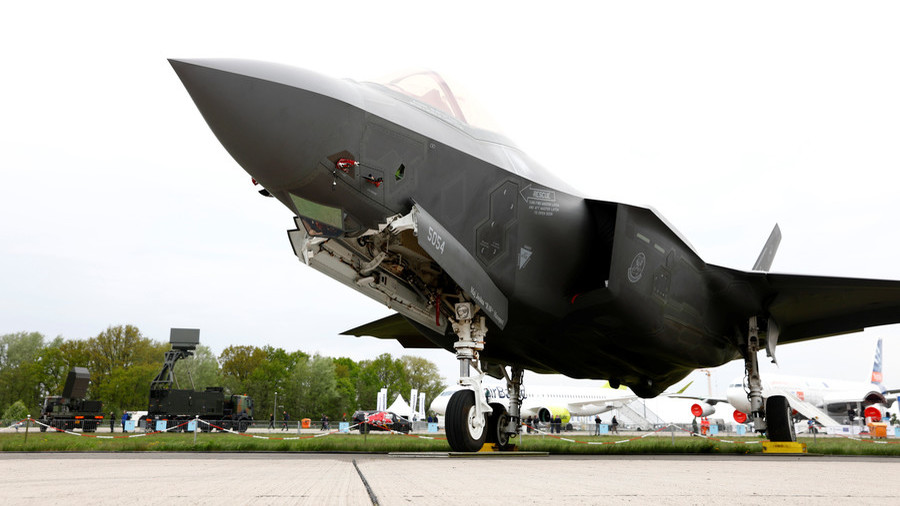
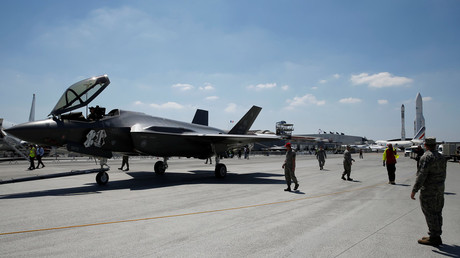 ‘No money for F-35,’ government auditors tell Congress
‘No money for F-35,’ government auditors tell Congress 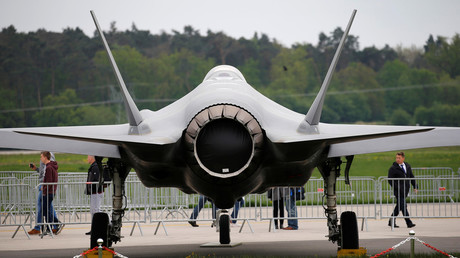 Turkey ‘receives’ first 2 F-35 fighter jets… for training in Arizona
Turkey ‘receives’ first 2 F-35 fighter jets… for training in Arizona 







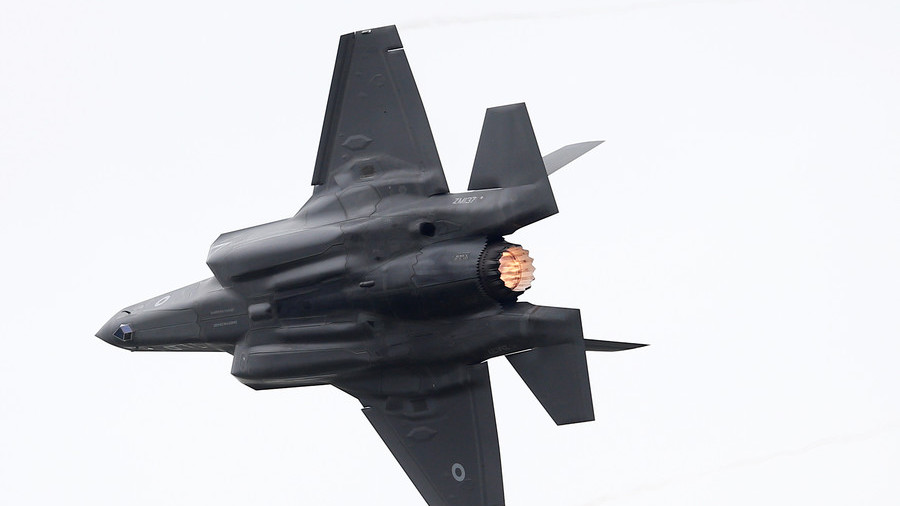
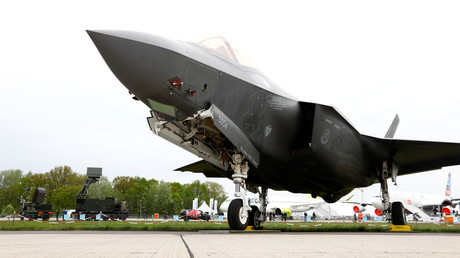 Senators 'dismayed’ as new report reveals Pentagon overestimated F-35 savings by $600 million
Senators 'dismayed’ as new report reveals Pentagon overestimated F-35 savings by $600 million  Italy’s Euroskeptic coalition forms new cabinet after president’s ‘undemocratic’ veto
Italy’s Euroskeptic coalition forms new cabinet after president’s ‘undemocratic’ veto 





